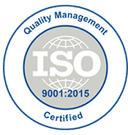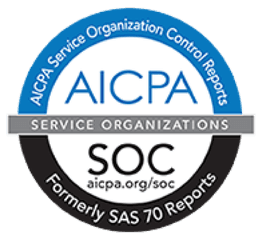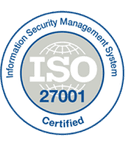Workflow Automation: Do you need it?
Author:
Subhankar Saha
COO,
Cloudangles

Workflow automation is a trending issue currently. Don’t believe me?? Then here are some statistics that might shock you
- The market for workflow automation and related technologies is growing at 20% per year and is likely to reach $5 billion USD by 2024.
- Due to the lack of automation, office workers manually hunt for files for more than 50% of their time.
- Gartner estimated 40% of productivity is lost to task-switching which could be addressed with workflow automation
- 70% of the business leaders (Out of a survey of 1000 VPs, Directors, and CIOs) reported that they spend 45 minutes to 3 hours on repetitive transactional tasks, from an 8-hour workday which can be drastically reduced by implementing automation
With the development of digital transformation, organizations are
searching for ways to streamline their processes and increase their
efficiency.
Workflow automation is frequently viewed as the panacea for all
issues. But is it as good as it’s made out to be?
In this article, we will examine why automated workflows are a growth
supplement.
We will also discuss optimal practices for effective workflow
automation.
By the end of this article, you should have a solid grasp of when
workflow automation should be utilized and how to grow continuously.
Workflow Automation — The Hero
Workflow automation has grown in popularity in recent years because of
its ability to improve the effectiveness and caliber of employees.
This is due to the fact that workflow automation can help to expedite
corporate processes by automating procedures such as job advertising
and background checks. In addition, it can cut the amount of time
required for applicant interviews.
However, there are several misunderstandings. For instance, automated
processes may be a costly option. In addition, several businesses have
discovered that automating their operation requires significant coding
skills and a steep learning curve.
Despite these beliefs, automation remains a potent tool that may be
utilized to enhance the productivity and quality of your business.
Consequently, it is essential to carefully examine how and when to
employ it.
Moreover, businesses must ensure that their automated processes are
efficient and error-free in order to maximise the benefits they give.
Automation Of Workflow Friend Or Foe?
Workflow automation is a fantastic tool that can accelerate your
company’s growth. Certain aspects of a business process can be
automated to reduce wasted time and resources.
In addition, workflow automation can assist in identifying possible
areas where your business requirements were behind.
This can ultimately save firms time and money.
In addition, by monitoring progress and performance, workflow
automation helps verify that all recruits are fulfilling predetermined
objectives.
Workflow automation is a delectable confection for business
advantages.
For instance, it can enhance the speed and precision of Employee
onboarding, grievance management or any business processes for that
matter. This is especially crucial in today’s competitive economy.
In addition, process automation can increase communication between
team members working in diverse departments by providing them with
up-to-date information.
This can save time and facilitate the coordination of all areas of the
recruitment process. By automating routine operations, recruiters may
devote more time to strategic responsibilities.
Additionally, workflow automation can enhance quality. By streamlining
the process, personnel are able to focus on productive tasks that
require more drastic attention, rather than low-value operations such
as importing data from other software. This is particularly crucial
when a corporation operates in a highly competitive field.
How To Successfully Implement Workflow Automation
Even while it can be a huge time saver for businesses, its
implementation might result in increased effort and employee
unhappiness.
Here are five suggestions for successfully integrating workflow
automation
- Before constructing workflows, thoroughly define your goals and objectives. This will ensure that the workflow is integrated and suited to your individual needs.
- Before implementing a solution, you must comprehend the capabilities and constraints of your requirement. This will aid in avoiding costly errors in the future.
- Test, test, and test some more until you are certain that everything is functioning as intended. Include actual users in your testing in order to swiftly identify and resolve any problems.
- Train your employees on how to effortlessly adapt to the automated journey; this will make them more productive overall and reduce the likelihood that they will experience issues when utilising it.
- Be willing to make adjustments to the workflows as necessary; this is a part of the learning process for everyone participating in the automated processes.
- Don’t be hesitant to experiment and try new ideas, as this will increase the overall effectiveness of your workflow automation.
Best Workflow Automation Practice
Workflow automation can increase your efficiency and productivity.
However, there are recommended practices you should adhere to in order
to maximise the utility of this technology. For instance, it is
essential to have a well-defined objective for process automation and
to have reasonable expectations for its benefits.
In addition, you must understand the potential hazards of workflow
automation. For instance, if your process is too complex or
time-consuming to automate, it may not be a suitable candidate for
workflow automation.
Creating a plan prior to automating a workflow is an essential best
practice. This will assist you in determining what should be automated
and how to go about doing so.
As you proceed through the procedure, you should keep note of your
progress. This will give you an accurate picture of your current
position and the distance you still need to travel.
It is also essential to have a mechanism in place for frequently
assessing the state of your workflows.
Thus, you can ensure that everything is proceeding according to plan.
Finally, it is essential to routinely test your workflows to ensure
that they are operating as intended.
When to Employ (and Avoid) Workflow Automation
Workflow automation is a potent tool applicable in a variety of
circumstances. Before utilising workflow automation, it is necessary
to grasp the misconceptions and facts associated with it. By
recognising these myths, you may make better judgments regarding
whether and how to implement workflow automation.
The Five Lies About Workflow Automation
-
Workflow Automation will not require any additional
consideration.
False — Although workflow automation is a straightforward procedure to set up, I would never propose a plug-and-play approach to workflows. Periodically, you must monitor and implement any required adjustments. -
Automation of workflows eliminates jobs.
False — With the best workflow automation systems, we can save time so that staff may devote their valuable energy to activities requiring strategic attention and concentration. -
Workflow automation is expensive.
False — While some platforms offering effective workflow automation solutions may be costly and conventional, others, such as Smartofficenxt, are not. Our mission is to make automation accessible to all ambitious individuals including business users. -
Workflow automation is not an ideal solution for many
businesses.
False — The fast adoption of automation solutions by large organisations and companies does not mean that it is inappropriate for small businesses and sole proprietors. Workflow automation technologies such as Smartofficenxt can be used by anyone or any firm that is overburdened with tasks. -
Automating operations will boost workplace productivity and
effectiveness.
When properly implemented, workflow automation can boost employee productivity by freeing up their time for other critical duties. However, this gain in productivity varies depending on the type of automated process.
As a Closing Remark
Workflow automation is a method for enhancing the effectiveness and
quality of commercial processes.
However, it is essential to carefully assess how and when to implement
process automation in order to minimize unintended consequences.
By adhering to the best practices indicated in this blog post, you can
implement workflow automation in your organization without having any
difficulties.
Prepare to bid farewell to the so-called hectic lifestyle with the aid
of technology.
Automate your work with no code necessary by simply connecting the
dots. Automatize now.
Recent Articles

The Future of Test Automation: How Agentic AI is Transforming Software Testing
Read More
Intelligent Test Orchestration - Optimizing CI/CD Pipelines with Testingaide
Read More
Harness the Power of Continuous Integration and Continuous Delivery for Your Microservices Projects
Read More
Achieving Seamless CI/CD in a Microservices Architecture
Read More





